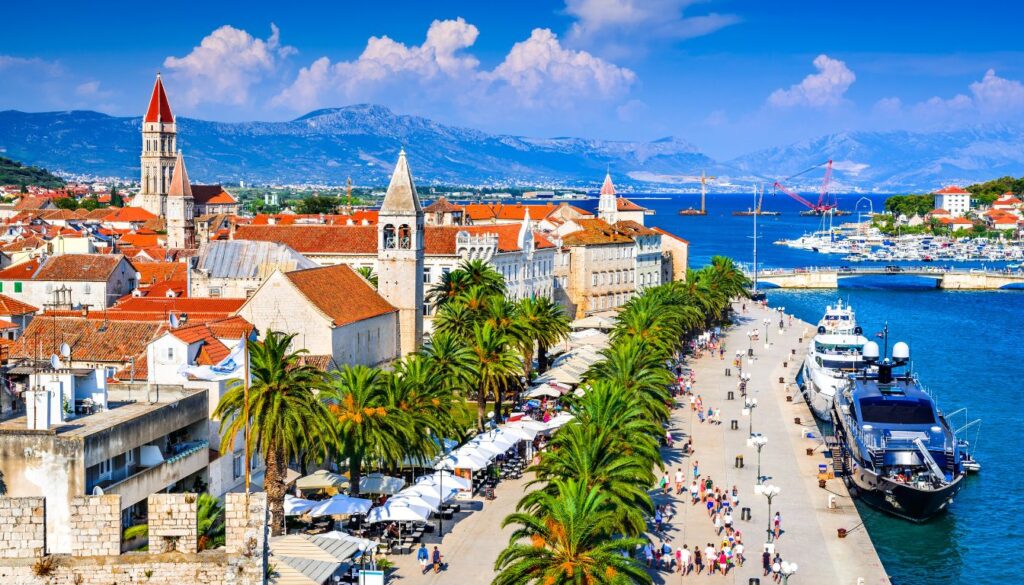Croatia is a traveler’s dream destination, boasting breathtaking landscapes, vibrant culture, and mouthwatering cuisine. From the sparkling coastline of the Adriatic to historic medieval towns and lush national parks, it offers something for every type of explorer. But when is the best time to visit this stunning country? Timing plays a huge role in crafting the perfect Croatian experience, whether you’re chasing sunny beach days, exciting festivals, or tranquil off-season escapes.
This guide will walk you through Croatia’s diverse seasons, its lively festival calendar, and some of its hidden gems so you can plan your visit with confidence.
Croatia’s Weather Guide: Finding Your Perfect Season
Croatia is blessed with a Mediterranean climate along its coast and a continental climate further inland. Each season has unique offerings, so your ideal visit depends on what you’re looking for.
Spring (March to May): The Season of New Beginnings
Spring is arguably one of the best times to visit Croatia. The weather is mild, with temperatures ranging from 50°F–70°F (10°C–21°C), and the natural scenery comes alive. Hills burst into vibrant greenery, and flowers bloom across the countryside.
Best for:
- Explore Plitvice Lakes National Park under misty waterfalls without the tourist crowds.
- City strolls through Dubrovnik or Split, where the streets are quieter and more charming.
What to pack:
Light layers, comfortable walking shoes, and a light jacket for evenings.
Summer (June to August): The Buzzing Tourist Season
Summer in Croatia is all about warm sunshine, clear blue waters, and a social atmosphere on the coastline. Temperatures soar up to 86°F (30°C), making it ideal for beachgoers and nightlife enthusiasts.
Best for:
- Island hopping at Hvar, Brač, or Vis, where beaches and nightlife blend seamlessly.
- Water sports like sailing, snorkeling, or paddleboarding along the Adriatic.
What to pack:
Swimsuits, sandals, sunscreen, and breezy summer clothing. Don’t forget to bring a hat or cap for sun protection!
Fall (September to November): Tranquility Meets Gorgeous Scenery
Autumn in Croatia offers warm waters and cooler air, perfect for relaxing and exploring. Plus, the summer crowds disappear, making this a wonderful time for slower-paced adventures.
Best for:
- Wine tastings in Istria and Dalmatia, where harvest festivals set the tone.
- Historical exploration in Zadar or Rijeka, with less bustle around significant sites.
What to pack:
A mix of lightweight clothing and sweaters or jackets for crisp evenings.
Winter (December to February): A Magical Wintry Charm
Though it’s Croatia’s off-season, winter brings its own kind of magic. Snow covers inland regions, while the coast remains relatively mild and cozy. Christmas markets transform cities like Zagreb into winter wonderlands.
Best for:
- Visiting Zagreb, which boasts award-winning Christmas markets and festive cheer.
- Experiencing traditional festivities like Carnival in January or February in Rijeka.
What to pack:
Warm coats, scarves, and waterproof shoes. Layers are key for indoor/outdoor comfort.
Festival Calendar: Celebrating Croatia’s Culture and Spirit
Croatia’s festivals offer a deep insight into its culture, traditions, and vibrant spirit. Whether you’re into music, heritage, or food, there’s a festival for every interest.
Summer Highlight Festivals
- Ultra Europe (Split, July): One of Europe’s premier electronic music festivals, featuring world-class DJ performances against a stunning coastal backdrop.
- Dubrovnik Summer Festival (July–August): A mix of drama, music, and dance performances that take place in the iconic cobblestoned streets and open-air venues of Dubrovnik.
Spring and Autumn Cultural Gems
- Zagreb Film Festival (Spring): A haven for cinephiles with an eclectic lineup of international films screened across charming venues in the capital.
- Truffle Days (Fall, Istria): A must-visit for food lovers! Hunt for truffles and sample gourmet dishes featuring this prized delicacy.
Unique Winter Celebrations
- Christmas Market in Zagreb (December): An enchanting market filled with twinkling lights, mulled wine, and cozy stalls selling artisanal crafts.
- Rijeka Carnival (January–February): Witness colorful parades and masquerades in Europe’s third-largest carnival celebration.
Planning your trip around one of these festivals can create memories you’ll treasure for a lifetime.
Hidden Gems of Croatia: Explore Beyond the Usual
Croatia’s charm goes far beyond Dubrovnik’s ancient walls or Hvar’s glitzy beaches. Venture off the beaten track to discover some of these lesser-known treasures:
1. Kornati Islands
An archipelago of 89 islands, Kornati National Park is a slice of untouched paradise. Known for its pristine waters and quiet landscapes, it’s perfect for kayaking, snorkeling, or just unwinding in absolute tranquility.
2. Mali Lošinj
Touted as the “Island of Vitality,” Mali Lošinj is a scenic island that boasts wellness retreats, aromatic Mediterranean gardens, and dolphin sightings in the surrounding waters.
3. Samobor
A picturesque town near Zagreb, Samobor is famous for its traditional creamy dessert called “samoborska kremšnita.” Its peaceful streets and charming atmosphere make it a great day-trip destination.
4. Nin
Nin, a small coastal town, has one of Croatia’s most beautiful sandy beaches and a fascinating history. Don’t miss visiting the world’s smallest cathedral, St. Cross Church, and Nin’s therapeutic mud beach!
Exploring these hidden gems will allow you to connect with Croatia’s authentic, local culture.
Plan Your Croatian Adventure Today
Now that you know the best time to visit Croatia—whether you’re chasing golden sands, vibrant festivals, or serene, hidden corners—it’s time to start planning! Each season brings its own charm, and by following this guide, you’re sure to craft the perfect itinerary tailored to your interests.
What’s next? Share this post with your fellow travel enthusiasts, or meet others passionate about discovering Croatia by joining our travel community. Start planning the adventure of a lifetime—Croatia is calling!


